Features of gluing paper wallpaper
Need to study marking, and prepare strips according to it. Arrows on both sides of the vertical line at the same level (direct marking) indicate that the pattern must be drawn up. At different levels - they are glued in reverse order, when each next strip is directed in the opposite direction. An arrow on one side indicates that there is no need to adjust the pattern.
The list of other basic rules for pasting walls contains the following theses:
- All remnants of the previous coating are removed from the panels with a spatula, after which the surface is wetted, which is necessary for better adhesion.
- The glue is diluted according to the instructions or purchased ready-made.
- First, the strip begins to smear, and then the wall panel. The edges of the strip must be finished.
- They begin to apply from the top. In this case, the wallpaper is folded. You need to glue paper strips from the corner, placing them vertically with a plumb line or level.
- Smooth the canvas with a rubber roller or dry cloth. To expel air and excess glue, this is done from the center to the edges.
The paper will shrink as it dries. So that no cracks appear, the stripes are glued with an overlap of 0.5 cm... Subsequently, when the paper dries, the wallpaper will shrink.
It is necessary to apply glue first on paper, so that during the time when they smear it on the wall, the paper wallpaper has time to soak. If you buy ready-made wallpaper glue, before gluing the paper wallpaper, mix it thoroughly, achieving a uniform consistency. The main thing is to choose the right composition in order to ensure a reliable bond.
Which wallpaper glue is suitable for paper wallpapers?
The correct choice of glue ensures that no yellow spots appear after drying, the paper wallpaper does not fall off, but when the time comes to change it, it will easily come off the wall. You need to choose based on the type of paper wallpaper, depending on whether it is a simplex or a duplex:
- Simplex... For thin paper single-layer wallpaper, formulations made on the basis of processed cellulose or cotton products are used. Universal ones also fit.
- Duplex - two-layer paper. Wallpaper is used for painting. They are heavy and thick, which requires the use of non-woven glue or CMC.
It can be glued to the composition for vinyl wallpaper. By adding PVA to it, they achieve greater adhesion strength. They also use busylate or pure PVA. All information about the mixing technology is on the packaging. If it is a special glue for paper wallpaper, this should be indicated.
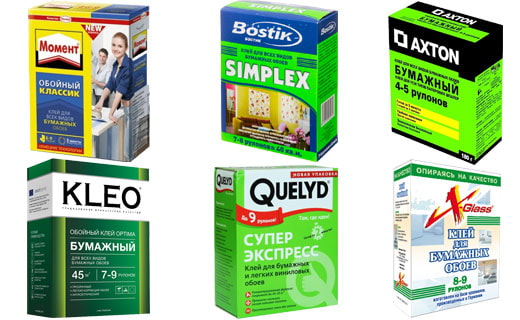
What tools do you need?
To prepare in advance, you need to purchase and prepare:
- container for mixing the sticky mass;
- wide rubber roller;
- narrow roller and dry rags;
- a spatula for mixing glue;
- wallpaper knife and scissors;
- level or plumb line;
- pencil or ballpoint pen;
- brush with a wide butt.
After everything is at hand, they begin to prepare.
Proper preparation for gluing
After the glue is prepared, everything needs to be ready. Otherwise it will have to be thrown away as it will catch and become unusable.
The preparatory process is as follows:
- In order not to stain the floor covering, it is covered with plastic wrap. It is important to keep it clean.
- The electricity is cut off.
- Covers for sockets and light switches are dismantled.
- An adhesive composition is being prepared.
- If there is not enough light, the sockets are sealed with tape, which is then removed.
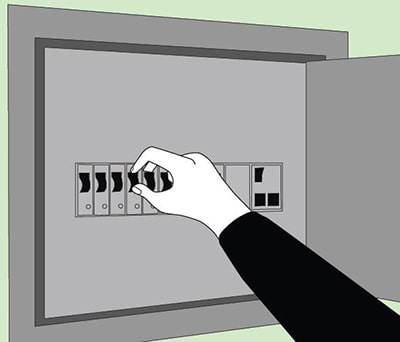
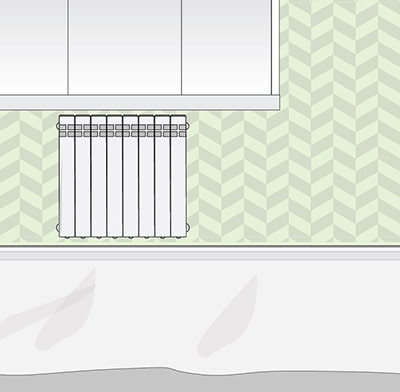
How to properly dilute the glue?
Before gluing the paper wallpaper, you need to cut it into strips and prepare the glue. The technology lies in the fact that from the unpacked pack, the dry mixture is poured into a dry, clean, deep container. Water is also introduced there. In this case, you need to constantly stir until a thick, sticky mass is formed. The proportions are indicated on the packaging. It is enough to mix the ready-made mixtures.
IMPORTANT! Prepare enough glue to enough for 4-5 pages... Otherwise, the residue will thicken. Adding water to make it liquid again is prohibited. This mixture will not hold the wallpaper on the wall.
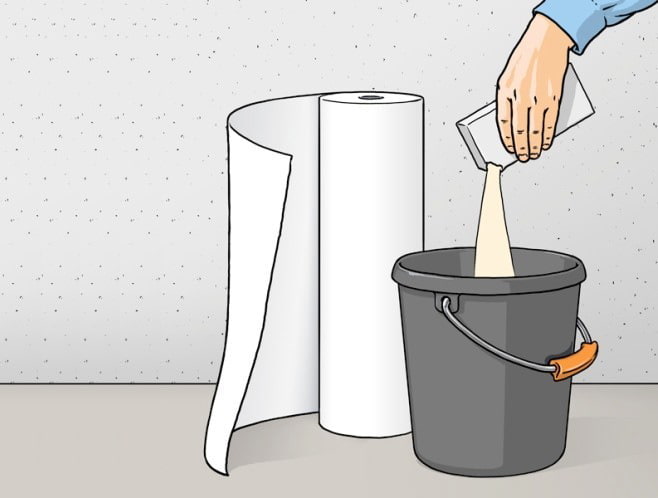
Surface preparation
It needs to be cleaned from the remnants of the old coating. It is impossible to glue paper wallpaper on whitewash and paint (oil or water-based). The surface must be free of dust. Old wallpaper is torn off, the remnants of glue are peeled off.
You can glue on the surface:
- covered with newspapers;
- covered with putty;
- impregnated with a primer.
Glue paper wallpaper without preparation possible on concrete or drywall... And the foam will not withstand the load. This material is not strong enough.
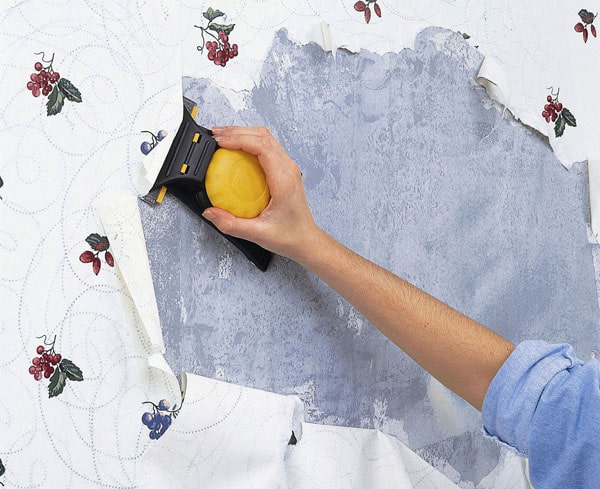
DIY wall sticking instructions
Two-layer paper wallpaper can be glued joint to joint, if this method is provided by the manufacturer. The pattern is fitted dry on the floor. The technology assumes that the stripes are first smeared, and then the wall. The step-by-step instruction consists of four steps.
Stage 1: scheme and wall markings
In order for the first strip to be oriented vertically, a line is drawn on the surface of the wall panel. Its location is determined using a plumb bob, laser level or level. The entire wall can be marked out to determine the required number of strips of wallpaper.

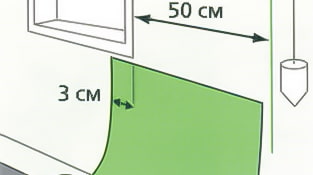
Stage 2: preparing wallpaper
Having measured the height of the ceiling, proceed to the preparation of paper canvases.
- Fitting the pattern is done on the floor. The offset in millimeters is indicated on the packaging. With correct measurements, the wall covering will turn out without seams.
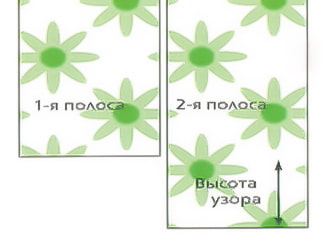
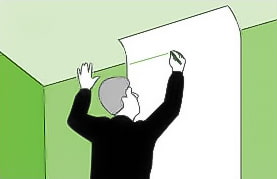
- You need to smear glue on paper wallpaper with a wide brush, evenly distributing the mixture over the surface, grabbing the edges.
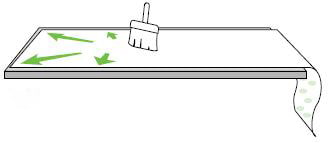
Stage 3: gluing
- Oiled wallpaper is folded so that about a third of the length remains exposed.
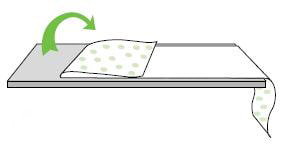

- Applying the canvas on top of the ceiling, make sure that after pressing it is vertical. For this, special markings are applied.
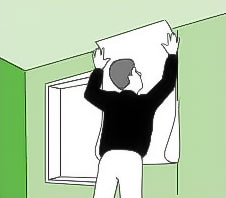
- Having glued the top, they will separate the folded part and press the strip to the very bottom.

- Air and excess glue are expelled from the axis to the edges with a dry cloth.
Stage 4: final
- All protruding parts are cut off. You do not need to peel off the strip; trimming is performed with a special wallpaper knife.

- The joints are rolled with a special narrow roller.

- The protruding glue is wiped off with a dry, clean cloth.
How to glue in problem areas?
In the process, you will have to glue paper wallpaper in hard-to-reach places. Each case is different and has a number of features. To glue the areas under the window, above the doorway, behind the batteries, it is necessary to measure and prepare strips of the required size in advance.Difficulties also arise if the room has uneven walls, as well as when pasting inside and outside corners.
In the photo, a diagram of gluing wallpaper around sockets and switches:

In the photo, the scheme for gluing wallpaper behind the radiator:
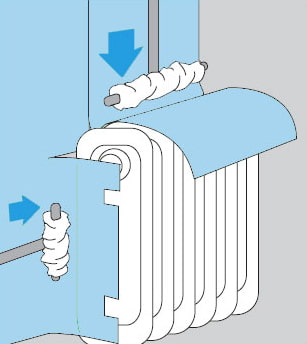
Step-by-step guide to gluing the ceiling
Basically, the technology is identical. Unless, it is better to glue paper wallpaper on the ceiling from the window. It matters how the strips are glued (overlap or butt-to-joint). Otherwise, the sequence of actions is the same.
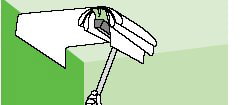

Video instruction
For greater clarity, it is better to watch the video, which describes and shows the full cycle of work.
How long does paper wallpaper dry?
On average, it is 8-20 hours. Single layers dry faster. At this time, there should be no drafts in the room. Drying time depends on the air temperature. In cold rooms, this period can be doubled. It is prohibited to speed up the process with fans, heaters, hair dryers.
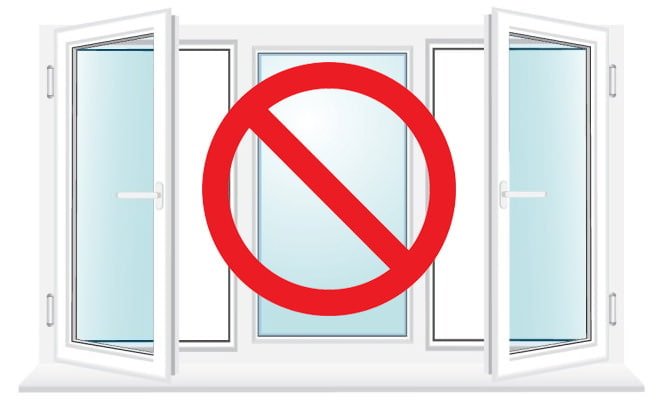
In order for the paper wallpaper to hold for a long time and firmly, it is better to give a margin of time. If you adhere to the presented rules and recommendations, the repair will delight the eye for many years.

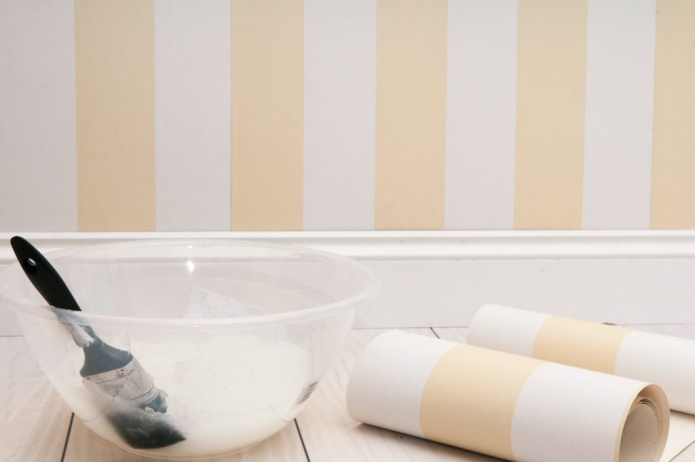
 10 practical tips for arranging a small kitchen in the country
10 practical tips for arranging a small kitchen in the country
 12 simple ideas for a small garden that will make it visually spacious
12 simple ideas for a small garden that will make it visually spacious
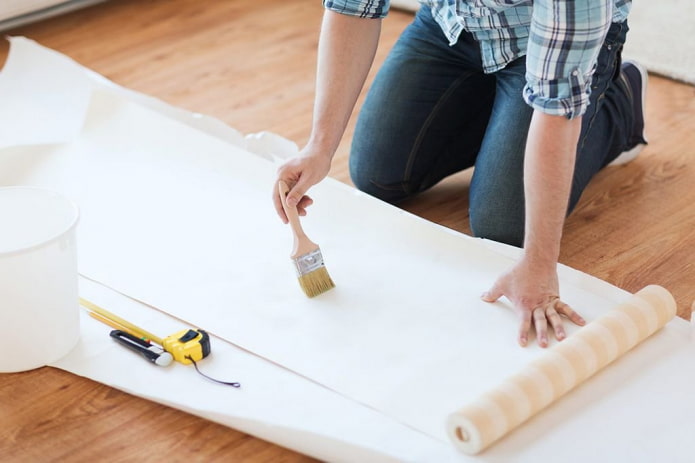
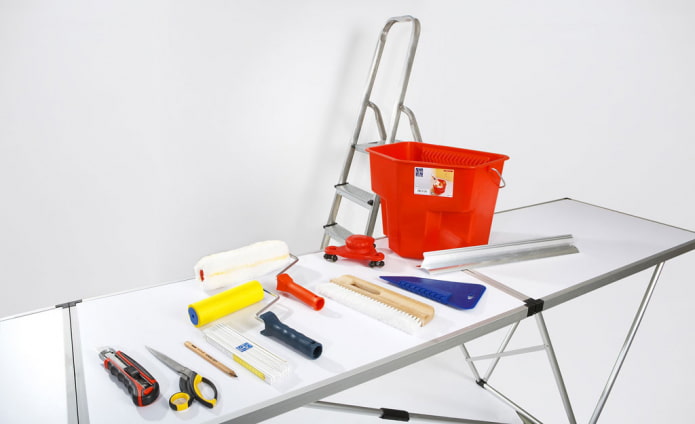

 What is better not to do it yourself during the repair?
What is better not to do it yourself during the repair? Bloated linoleum: how to fix it without disassembly
Bloated linoleum: how to fix it without disassembly The worst decisions in apartment renovation
The worst decisions in apartment renovation  Installation of ceiling tiles: choice of materials, preparation, order of work
Installation of ceiling tiles: choice of materials, preparation, order of work How to glue a ceiling plinth to a stretch ceiling?
How to glue a ceiling plinth to a stretch ceiling? Ceiling plinth for stretch ceiling: types, recommendations for selection
Ceiling plinth for stretch ceiling: types, recommendations for selection